I am trying to use the spherical harmonics to represent a perturbation of a spherical object in an acoustic and fluid flow in 3D. So far, I have been able to use a 2D perturbation on a 3D spherical object, however, I would like to extend that.
The current code represents a 3D sphere with a 2D perturbation, so the perturbation is only in x and y:
clearvars; clc; close all;
Nx = 128;
Ny = 128;
Nz = 128;
Lx =128;
Ly = 128;
Lz = 128;
xi = (0:Nx-1)/Nx*2*pi;
xi_x = 2*pi/Lx;
x = xi/xi_x;
yi = (0:Ny-1)/Ny*2*pi;
yi_y = 2*pi/Ly;
y = yi/yi_y;
zi = (0:Nz-1)/Nz*2*pi;
zi_z = 2*pi/Lz;
z = zi/zi_z;
[X,Y,Z] = meshgrid(x,y,z);
A = 2*pi / Lx;
B = 2*pi / Ly;
C = 2*pi / Lz;
x0 = 64;
y0 = 64;
z0 = 64;
rx0 = 20;
ry0 = 20;
rz0 = 20;
p = 3;
b = 0.1; % pert amplitude
c = 12;
d = 1;
a = 4;
theta = atan2(Y -y0, X-x0) - (pi/c);
p0 = ((X-x0) .* (X-x0)) /(rx0 * rx0) + ((Y-y0) .* (Y-y0))/(ry0 * ry0) + ((Z-z0) .* (Z-z0))/(rz0 * rz0);
Test =d + a * exp((-1. * p0 .* (1 - b .* cos(c * theta))).^p) ;
figure
isosurface(X,Y,Z,Test);
shading flat;
grid on;
Which returns the isosurface:
However, I would like to achieve something similar to this plot (perturbation in z as well):

This is my attempt using spherical harmonics to reproduce the above picture:
clearvars; clc; close all;
%in spherical coord
%calculate r
Nx = 128;
Ny = 128;
Nz = 128;
Lx =128;
Ly = 128;
Lz = 128;
xi = (0:Nx-1)/Nx*2*pi;
xi_x = 2*pi/Lx;
x = xi/xi_x;
yi = (0:Ny-1)/Ny*2*pi;
yi_y = 2*pi/Ly;
y = yi/yi_y;
zi = (0:Nz-1)/Nz*2*pi;
zi_z = 2*pi/Lz;
z = zi/zi_z;
r = sqrt(x.^2 + y.^2 + z.^2);
% Create the grid
delta = pi/127;
%Taking for instance l=1, m=-1 you can generate this harmonic on a (azimuth, elevation) grid like this:
azimuths = 0 : delta : pi;
elevations = 0 : 2*delta : 2*pi;
[R, A, E] = ndgrid(r, azimuths, elevations); %A is phi and E is theta
H = 0.25 * sqrt(3/(2*pi)) .* exp(-1j*A) .* sin(E) .* cos(E);
%transform the grid back to cartesian grid like this:
%can also add some radial distortion to make things look nicer:
%the radial part depends on your domain
X = r .* cos(A) .* sin(E);
Y = r .* sin(A) .* sin(E);
Z = r .* cos(E);
%parameters
x0 = 64;
y0 = 64;
z0 = 64;
rx0 = 20;
ry0 = 20;
rz0 = 20;
p = 3;
b = 0.1; % pert amplitude
%c = 12;
d = 1;
a = 4;
p0 = ((X-x0) .* (X-x0)) /(rx0 * rx0) + ((Y-y0) .* (Y-y0))/(ry0 * ry0) + ((Z-z0) .* (Z-z0))/(rz0 * rz0);
Test1 =d + a * exp((-1. * p0 .*H).^p) ;
figure
isosurface(X,Y,Z,real(Test1)); %ERROR
This gives me the following error:
Error using griddedInterpolant
Grid arrays must have NDGRID structure.
Is the issue in the way I am setting up the spherical harmonics? or the functional form of Test1?? Thanks
